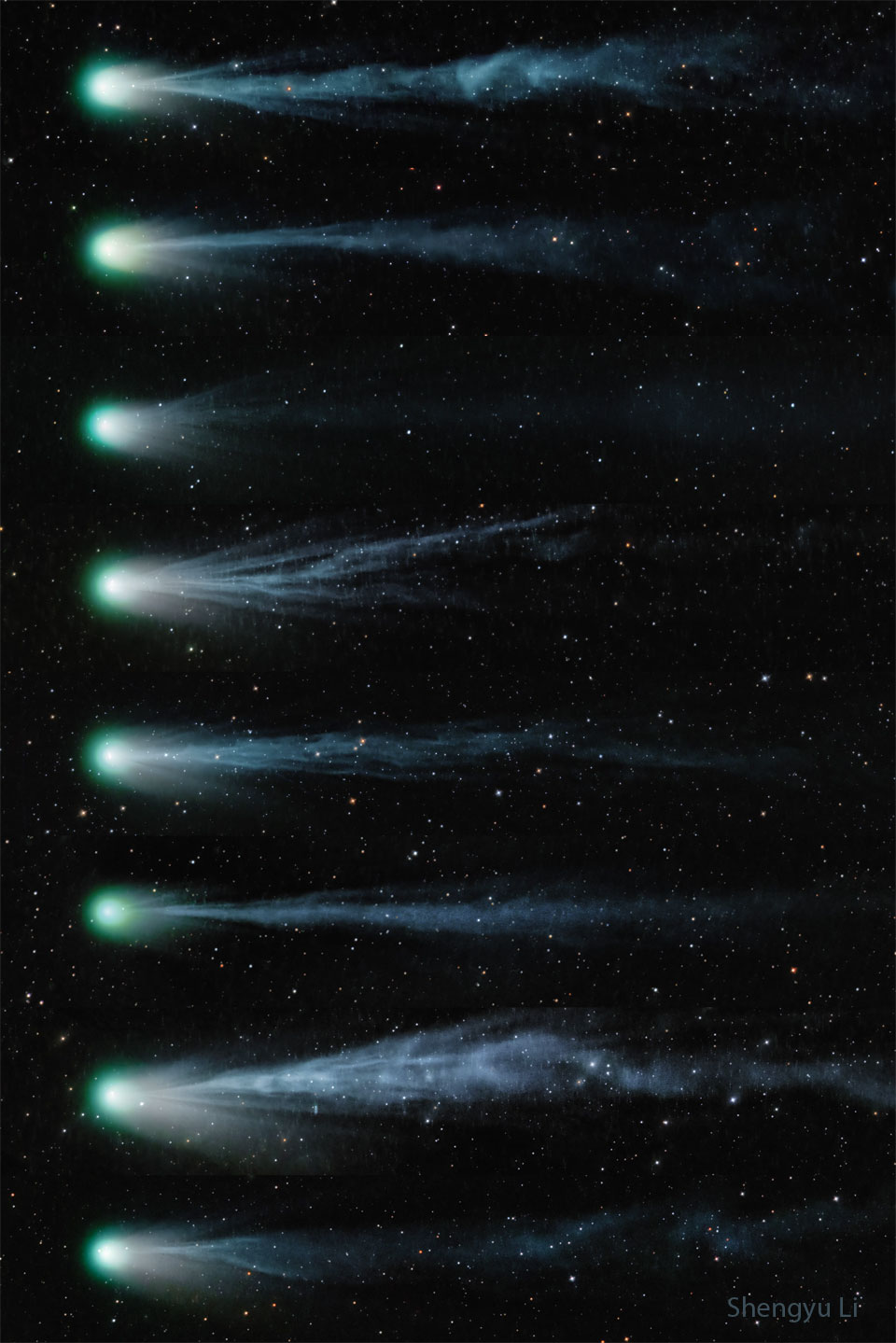龐斯-布魯克斯彗星不斷變化的離子尾巴
The Changing Ion Tail of Comet Pons-Brooks

來源:Shengyu Li & Shaining|發表日期:2024-04-08
彗尾如何變化?這取決於彗星。 第 12 P/Pons-Brooks 號彗星的離子尾部一直在發生明顯的變化,詳見 3 月 6 日至 14 日 9 天內的專題影像(從上到下)。 在某些日子裡,彗星的離子尾相對較長而且複雜,但並不是每天都如此。 彗尾變化的原因包括彗核噴射物質的速度、經過的太陽風的強度和複雜性以及彗星的旋轉速度。 在一週的時間裡,明顯的變化甚至包括與地球的視角變化。一般來說,彗星的離子尾會遠離太陽,因為排出的氣體會被太陽風推出。今天,龐斯-布魯克斯可能會成為一顆罕見的彗星,對於那些能夠看到太陽被月球完全遮住的人們來說,這顆彗星可能會在白天突然出現。 NASA 報道:今天的日全食 日全食影像:向 APOD 提交的著名作品
原文:How does a comet tail change? It depends on the comet. The ion tail of Comet 12P/Pons–Brooks has been changing markedly, as detailed in the featured image sequenced over nine days from March 6 to 14 (top to bottom). On some days, the comet's ion tail was relatively long and complex, but not every day. Reasons for tail changes include the rate of ejection of material from the comet's nucleus, the strength and complexity of the passing solar wind, and the rotation rate of the comet. Over the course of a week, apparent changes even include a change of perspective from the Earth. In general, a comet's ion tail will point away from the Sun, as gas expelled is pushed out by the Sun's wind. Today, Pons-Brooks may become a rare comet suddenly visible in the middle of the day for those able to see the Sun totally eclipsed by the Moon. NASA Coverage: Today's Total Solar Eclipse Total Eclipse Imagery: Notable Submissions to APOD
※ 本文由萌芽機器人自動轉貼自每日一天文圖(Astronomy Picture of the Day,APOD),原文為英文,正體中文是透過 DeepL 翻譯及 OpenCC 進行自動處理,內容僅供參考,若有任何錯誤之處還請見諒!
關於每日一天文圖:每日一天文圖網站是美國國家航空暨太空總署與密西根理工大學提供的服務,網站每天提供一張影像或圖片,並由天文學家撰寫扼要說明其特別之處。